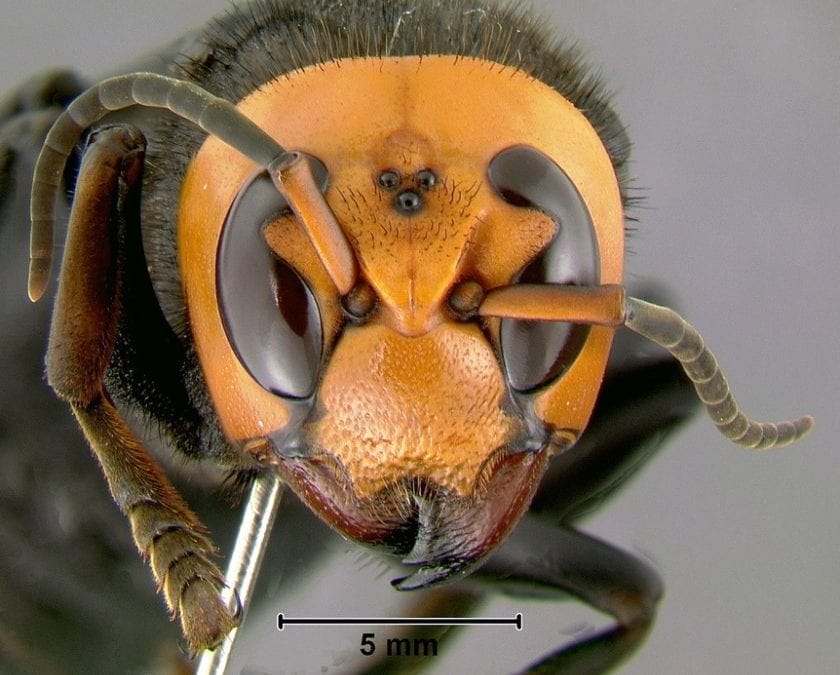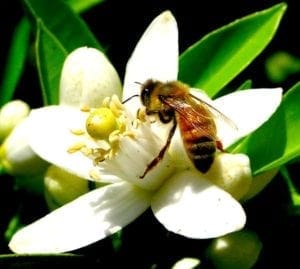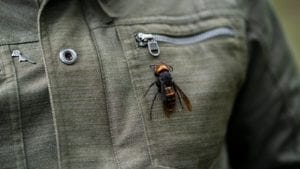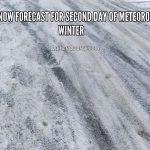Asian giant hornets (a.k.a. murder hornets) have been spotted only in Washington state and Canada. Traps elsewhere are killing beneficial native wasps and bees.
– News covered by Quincy Quarry News with commentary added.
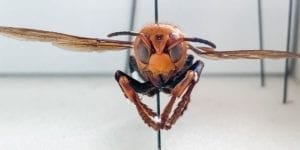
Bad bug, bad bug – whatcha gonna do when it comes for you?
A Washington Invasive Species Council image via CNN
Panicked over ‘murder hornets,’ people are killing desperately needed native bees.
Condensed from a Los Angeles Times article.
People, get a grip.
Yes, the Asian giant hornet, now famously known as the “murder hornet,” is one huge scary wasp, capable of decimating an entire colony of honeybees and savagely stinging and possibly killing humans who get in their way.
But since it was reported that two hornets were spotted for the first time every anywhere in the United States in Washington state, the national panic has led to the needless slaughter of native wasps and bees as far away as thousands of miles away – beneficial insects whose populations are already and variously threatened, said Doug Yanega, senior museum scientist for the Department of Entomology at the University of California Riverside.
Bees are the planet’s pollinators-in-chief, pollinating approximately 75% of the fruits, nuts and vegetables grown in the United States, according to the U.S. Department of Agriculture.
Additionally, wasps play a beneficial role in agriculture production, albeit it a lesser one.
“Millions and millions of innocent native insects are (potentially, ed.) going to die as a result of this,” Yanega said. “Folks in China, Korea and Japan have lived side by side with these hornets for hundreds of years, and it has not caused the collapse of human society there. My colleagues in Japan, China and Korea are just rolling their eyes in disbelief at what kind of snowflakes we are.”
The worries started on May 2, after the New York Times reported that a beekeeper in Custer, Washington found an entire hive of bees destroyed in November 2019, their heads ripped from their bodies.
Then two Asian giant hornets were found near Blaine, just a few miles north, near the United States-Canadian border.

Kayfabe rules?
A Luche Libre image
Amazingly, the Trump Administration yet to roll out a social media blitz decrying the undocumented immigration of these Murder Hornets; however, there is still plenty of time to do so, not to mention that it could surely use a distraction from its other problems of late.
That and only one scientifically confirmed hornet sighting in the United States at that.
One.
Granted, the so-called Murder Hornet is the largest of the world’s hornets.
They can grow to 2 inches from their cartoonish Spider Man-type face (with vicious mandibles) to their quarter-inch-long stinger that can puncture heavy clothing.
As they hibernate, scientists speculate that at least two hornet queens hitched a ride to North America on a cargo ship, the first time this have been known to have happened “in over a century of significant maritime commerce between Vancouver and Southeast Asia.”

Freaking out over a self-inflicted hornet bite
A still image from a YouTube video
In the meantime, freaked-out people across the country have started putting out traps, Yanega said, and state apiarists (beekeepers) in Kentucky and Tennessee have announced plans to put out traps this month.
Plus, Preying Mantas love to dine on Murder Hornet brains tartare.
Additionally, China and other countries, some people think the hornet pupae and larvae are delicious. “People consume them,” Yanega said. “You can buy them in cans.”
That and there appears to be no viable basis for Murder Hornets to vector coronaviruses.
“I don’t want to downplay this — they are logistically dangerous insects. But having people in Tennessee worry about this is just ridiculous. The only people who should be bothering experts with concerns about wasp IDs are living in the northwest quadrant of Washington (state). And really, right now, nobody else in the country should even be thinking about this stuff.”
Source: Panicked over ‘murder hornets,’ people are killing native bees we desperately need

